What is a Large Language Model (LLM)? 14+ Best LLMs You Should Know About
have you ever wondered how your favorite virtual assistant can understand your commands, or why chatbots have become so impressively conversational? The magic behind these interactions lies in a fascinating technology called Large Language Models, or LLMs for short. These powerful algorithms are revolutionizing the way we communicate with machines,turning complex language processing into a seamless experience. But what exactly are LLMs, and how do they work?
In this article, we’ll break down the essentials of large Language Models, explore their amazing capabilities, and highlight 14 of the best LLMs currently making waves in the tech world. Whether you’re a tech enthusiast, a business leader, or just curious about the future of AI, this guide will equip you with the knowledge you need too understand these remarkable tools. So, grab a cup of coffee, sit back, and let’s dive into the world of LLMs together! You might just find yourself inspired by the potential they hold for innovation and creativity.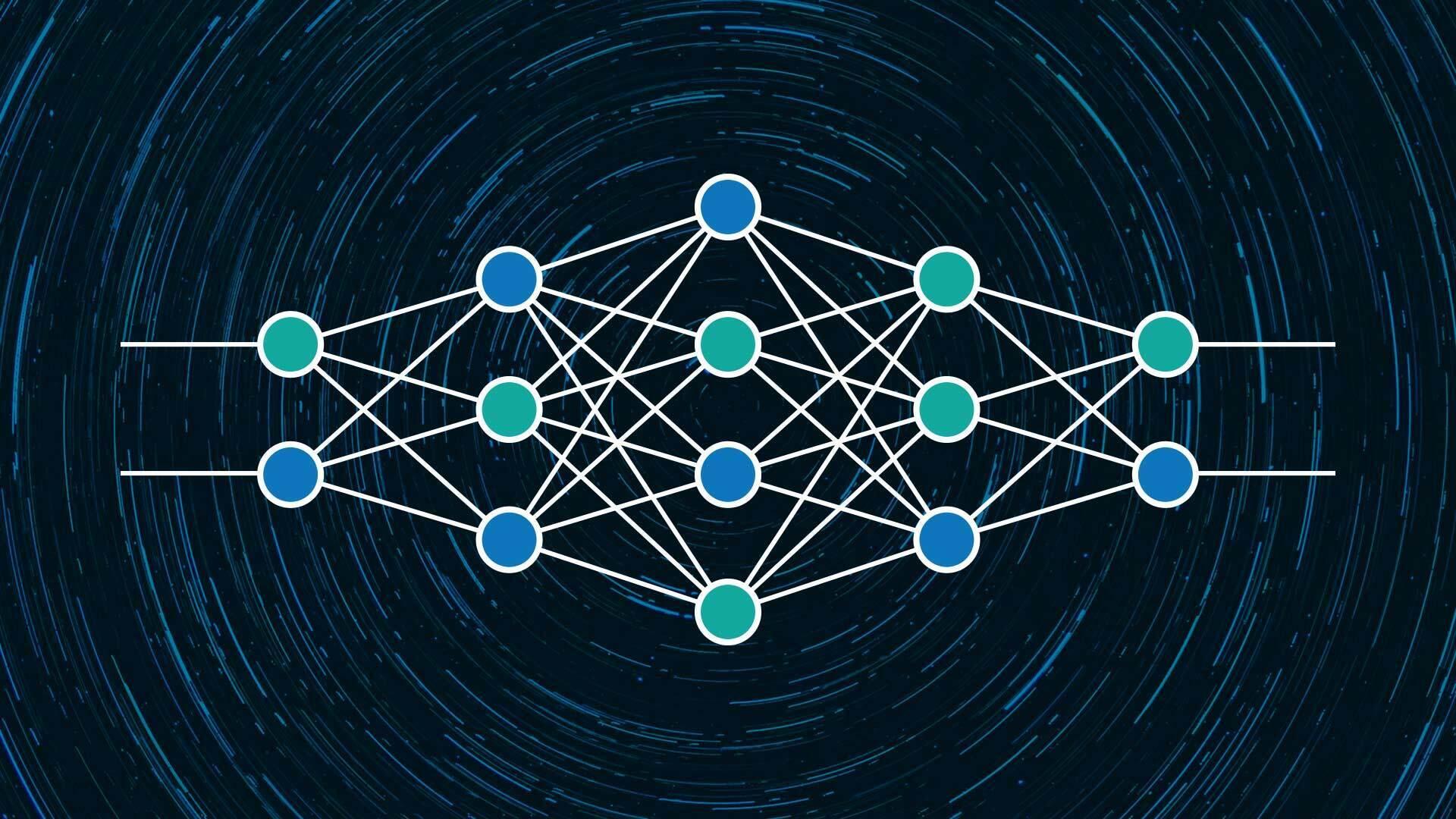
Understanding the Basics of Large Language Models
Large Language Models (LLMs) have surged into the spotlight due to their remarkable capabilities in understanding and generating human-like text. But what exactly are these models,and how do they function? At their core,LLMs are a type of artificial intelligence designed to process and produce language in a way that resembles human dialog.
These models are powered by deep learning techniques, utilizing vast amounts of text data to learn patterns, grammar, and context. Here are some foundational aspects that define LLMs:
- Architecture: Most LLMs are built using transformer architecture, which allows for processing words in relation to all other words in a sentence, rather than sequentially. this enables better context understanding.
- Training Data: LLMs are trained on diverse datasets sourced from books, articles, websites, and more, helping them grasp various topics and styles of writing.
- Tokenization: Before processing text, LLMs break it down into smaller units called tokens. This helps them understand nuances,punctuation,and even slang.
- Fine-Tuning: After initial training, LLMs can be fine-tuned on specific datasets to enhance their performance for particular applications, like customer support or creative writing.
The scale of these models is another crucial factor. LLMs can have billions or even trillions of parameters, which are the weights and biases that help the model make predictions about what text should come next. More parameters usually mean a better understanding of context and subtleties, allowing for more coherent and contextually accurate responses.
When evaluating the effectiveness of various LLMs, it’s essential to consider their applications. Different models may excel in distinct areas,such as:
- Conversational AI: Perfect for chatbots and virtual assistants.
- Content Generation: Capable of writing articles, stories, and marketing copy.
- Translation: Offering nuanced translations between multiple languages.
- Summarization: Condensing long texts into concise summaries without losing key information.
To better understand the landscape of LLMs, here’s a quick comparison of some popular models:
| Model | Release Year | Parameters | Main use Cases |
|---|---|---|---|
| GPT-3 | 2020 | 175 billion | Text generation, chatbots |
| BERT | 2018 | 345 million | Search optimization, sentiment analysis |
| T5 | 2019 | 11 billion | Text transformation tasks |
| Claude | 2023 | Unknown | Conversational AI |
large Language Models are at the forefront of AI-driven language processing. with their ability to comprehend and generate text that mimics human language, they are becoming integral tools across industries, enhancing communication, creativity, and understanding in ways previously thought impossible.
How Large Language Models Work Under the Hood
Large language Models (LLMs) operate on the principles of deep learning and natural language processing, harnessing the power of neural networks to understand and generate human-like text. At their core,these models are built using architectures like transformers,which allow them to analyze vast amounts of text data and discern patterns within it. This is why they are capable of producing coherent and contextually relevant responses based on the input they receive.
Key Mechanisms of LLMs:
- Tokenization: Before processing, text is broken down into smaller units called tokens. This can include whole words, subwords, or characters, making it easier for the model to interpret and generate language.
- Contextual Understanding: LLMs utilize attention mechanisms to weigh the relevance of different words in a sentence, enabling them to maintain context over long passages of text.
- Training on Massive Datasets: These models are trained on diverse datasets that encompass a wide range of topics and styles, allowing them to generate content that feels natural and informed.
- Fine-Tuning: After initial training,models can be fine-tuned on specific tasks or domains,enhancing their performance in particular areas such as customer service,creative writing,or technical documentation.
One of the most fascinating aspects of LLMs is their ability to generate text that is not only relevant but also stylistically varied. By leveraging techniques like temperature sampling and beam search during text generation, these models can produce anything from formal reports to casual conversations, appealing to an array of use cases.
| Model Name | Key Features | Common Use Cases |
|---|---|---|
| GPT-3 | 175 billion parameters, versatile | Chatbots, content creation |
| BERT | Bidirectional context, pre-trained | Search optimization, sentiment analysis |
| XLNet | Permuted language modeling | Text classification, question answering |
| T5 | Text-to-text framework | Translation, summarization |
Moreover, the iterative nature of training these models allows them to continually improve. Feedback loops, combined with user interactions, help refine their output, making them increasingly adept at understanding and meeting user needs. As technology advances, we can expect these language models to become even more sophisticated, enabling richer interactions across various platforms.
Large Language Models represent a remarkable intersection of computer science and linguistics. Their ability to simulate human-like conversation and perform complex tasks is not just a technological feat but a glimpse into the future of human-computer interaction. By understanding how these models function under the hood, we can better appreciate their capabilities and the incredible potential they hold for various industries.
The Key Benefits of Using Large Language Models
Large Language Models (LLMs) have fundamentally transformed the landscape of artificial intelligence and natural language processing.When you integrate LLMs into your projects, you unlock a plethora of advantages that can streamline processes, enhance user experience, and drive innovation. Here are some key benefits of utilizing these powerful models:
- Enhanced Understanding of Context: llms are adept at grasping the nuances of language,which enables them to interpret context more effectively than earlier models. This means they can generate more relevant and coherent responses in conversations, making interactions feel more natural.
- Versatility Across Applications: LLMs can be employed in a variety of applications, from chatbots and virtual assistants to content generation and summarization. Their adaptability allows businesses to leverage them in multiple areas,maximizing investment and resources.
- Improved Efficiency: By automating tasks such as data entry, content creation, or customer support, LLMs can considerably reduce the time and effort required to complete projects. this efficiency not only saves costs but also allows teams to focus on more strategic initiatives.
- Personalization: With their ability to analyze user data and preferences, LLMs can tailor interactions to individual needs, providing a unique experience for each user. this level of personalization can lead to increased user satisfaction and engagement.
- Continuous Learning: Many LLMs improve over time through machine learning techniques. As they are exposed to more data and user interactions, they become increasingly accurate and competent, ensuring that your applications remain up-to-date with the latest trends and language use.
Moreover, the integration of LLMs into your workflow can foster creativity and innovation. By taking on repetitive or mundane tasks, these models free up human resources to focus on brainstorming and developing groundbreaking ideas. This synergy between human creativity and machine efficiency creates a powerful combination that can propel your projects forward.
In addition to their practical benefits, LLMs are also paving the way for new forms of interaction with technology.Imagine a world where your digital assistant not only understands your commands but also anticipates your needs and preferences. This evolution in human-computer interaction is not just a possibility; its becoming a reality thanks to LLMs.
| Benefit | description |
|---|---|
| Context Understanding | Grasps language nuances for coherent responses. |
| Versatility | Applicable in chatbots, content generation, and more. |
| Efficiency | Automates tasks to save time and costs. |
| Personalization | Tailors interactions to user preferences. |
| Continuous Learning | becomes more accurate with exposure to data. |

Top features to look for in a Quality LLM
When selecting a quality Large Language Model (LLM), several key features can significantly enhance your experience and application results. Here are some essential aspects to consider:
- Performance: Evaluate how well the LLM performs tasks such as text generation, summarization, and question answering. Look for benchmarks and comparisons to understand relative capabilities.
- Customization: The ability to fine-tune or customize an LLM to suit specific needs is invaluable. This feature allows users to adapt the model to unique datasets or industry-specific terminology.
- Scalability: A great LLM should perform well regardless of the scale of the task. Whether you’re processing large volumes of data or deploying it in a low-resource habitat, ensure the model can scale effectively without compromising on quality.
- API Accessibility: Check if the LLM provides an easy-to-use API, which simplifies integration into applications or workflows. This can save you time and resources during implementation.
Moreover, examining the underlying technology and architecture can provide insight into the model’s reliability and versatility:
- Model Architecture: Look for LLMs built on advanced architectures like transformers, which can better understand context and nuances in language.
- Multi-Language Support: If your application requires multilingual capabilities, ensure the LLM can effectively handle various languages without losing accuracy.
- Ethical Considerations: Examine how the LLM addresses issues of bias and ethical AI use. Clear models with ongoing assessments for fairness can foster greater trust in your applications.
Lastly,consider the community and support surrounding the LLM:
- Documentation and Resources: Thorough documentation can ease the learning curve and provide guidance on implementation and troubleshooting.
- Community engagement: A vibrant community can offer valuable insights, share experiences, and provide solutions to common challenges faced by users.
Choosing the right LLM can be a game-changer for your projects. By keeping these features in mind,you can make an informed decision that aligns with your goals and delivers exceptional results.
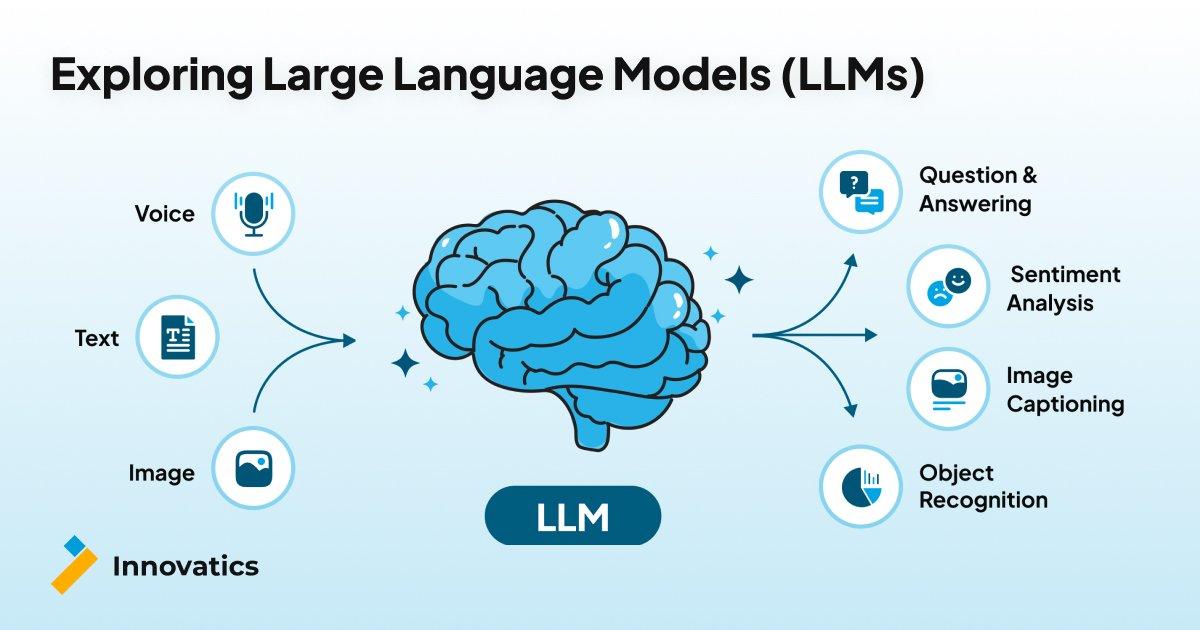
A Dive into the 14 Best Large Language Models Available Today
Large language models (LLMs) have revolutionized the way we interact with technology, enabling machines to understand and generate human-like text. These models utilize vast amounts of data and sophisticated algorithms to learn the nuances of language, making them invaluable tools in various applications, from chatbots to content creation. As we explore some of the best LLMs available today, it’s essential to consider their unique capabilities and potential uses.
Many leading LLMs are developed by tech giants and research institutions, showcasing a range of features that cater to different needs. Here are some standout models:
- openai’s GPT-3: Known for its impressive text generation capabilities, GPT-3 is widely used in creative writing, coding assistance, and customer service applications.
- Google’s BERT: Best for understanding the context of words in search queries, BERT significantly improves search engine results and natural language understanding.
- Facebook’s RoBERTa: An optimized version of BERT, RoBERTa excels in various NLP tasks, thanks to its robust training methodologies.
- anthropic’s claude: Focusing on ethical AI, Claude emphasizes safety and human-aligned responses, making it an attractive option for sensitive applications.
- EleutherAI’s GPT-Neo: Offering a freely available alternative to proprietary models, GPT-Neo allows developers to experiment without heavy costs.
| Model | Key Feature | Best Use Case |
|---|---|---|
| OpenAI’s GPT-3 | Text Generation | Creative Writing |
| google’s BERT | Context Understanding | Search Engine Optimization |
| Facebook’s RoBERTa | Robust Training | Natural Language Processing |
| Anthropic’s Claude | Ethical AI | Safe Applications |
| EleutherAI’s GPT-Neo | Open Source | Experimentation |
Each of these models brings something unique to the table. As an example, OpenAI’s GPT-3 not only generates coherent and contextually relevant text but can also perform tasks like translation and summarization, making it a versatile choice. On the other hand, Google’s BERT fundamentally changes how machines interpret the human language, enhancing the user experience across various platforms.
Moreover, advancements in LLMs are continually emerging. With the release of models like Microsoft’s Turing-NLG and Cohere’s Command R, users are gaining access to even more sophisticated tools. These models are pushing the boundaries of what’s possible in text generation, comprehension, and even conversational AI.
As businesses and developers seek to leverage these models, understanding their strengths and limitations will be crucial. Whether you’re looking for a model for customer support, content generation, or data analysis, the right LLM can significantly enhance productivity and innovation in your projects.
Comparing the Leading LLMs: Strengths and Weaknesses
When it comes to large language models (LLMs), the landscape is as diverse as it is exciting. Each model has its unique strengths and weaknesses, making it essential to understand what sets them apart. Let’s dive into a comparative analysis of some of the leading LLMs available today, spotlighting their capabilities and limitations.
GPT-3 by OpenAI: One of the most well-known models,GPT-3 boasts a staggering 175 billion parameters,enabling it to generate human-like text with remarkable fluency. However, its fundamental weakness lies in its tendency to produce plausible-sounding but factually incorrect information, a phenomenon known as “hallucination.”
BERT by Google: BERT (Bidirectional Encoder Representations from Transformers) is notably effective for understanding the context of words in search queries, thanks to its bidirectional training. This makes it great for tasks like sentiment analysis. On the downside, BERT is not designed for text generation, which limits its application in creative writing and dialogue generation.
T5 (Text-to-Text Transfer Transformer): T5 takes a novel approach by treating every NLP problem as a text generation task. This means it can excel in a wide variety of applications, from translation to summarization. However, it requires extensive fine-tuning, which can be resource-intensive and time-consuming.
claude by Anthropic: A newer entrant, Claude focuses heavily on ethical AI use and safety. Its design philosophy aims to reduce harmful outputs while promoting generative capabilities. nevertheless, its relatively smaller training dataset can limit its versatility compared to older models like GPT-3.
ChatGPT: Specially tuned for conversational interactions, ChatGPT excels in generating dialogue. Its ability to simulate engaging conversations makes it a popular choice for customer service bots and virtual assistants. However, its performance can drop when it encounters highly specialized topics where it lacks detailed training.
| Model | Strengths | Weaknesses |
|---|---|---|
| GPT-3 | Fluent text generation, large parameter size | Factually incorrect outputs |
| BERT | Excellent context understanding | Not designed for generation tasks |
| T5 | Versatile across NLP tasks | Resource-intensive fine-tuning |
| claude | Focus on ethical AI | Limited versatility |
| ChatGPT | Engaging conversational capabilities | Variable performance on specialized topics |
the choice of a large language model should align with your specific needs and applications. Each model brings something unique to the table, whether it’s advanced text generation, contextual understanding, or ethical considerations. By weighing their strengths and weaknesses, you can select the right LLM that suits your goals.
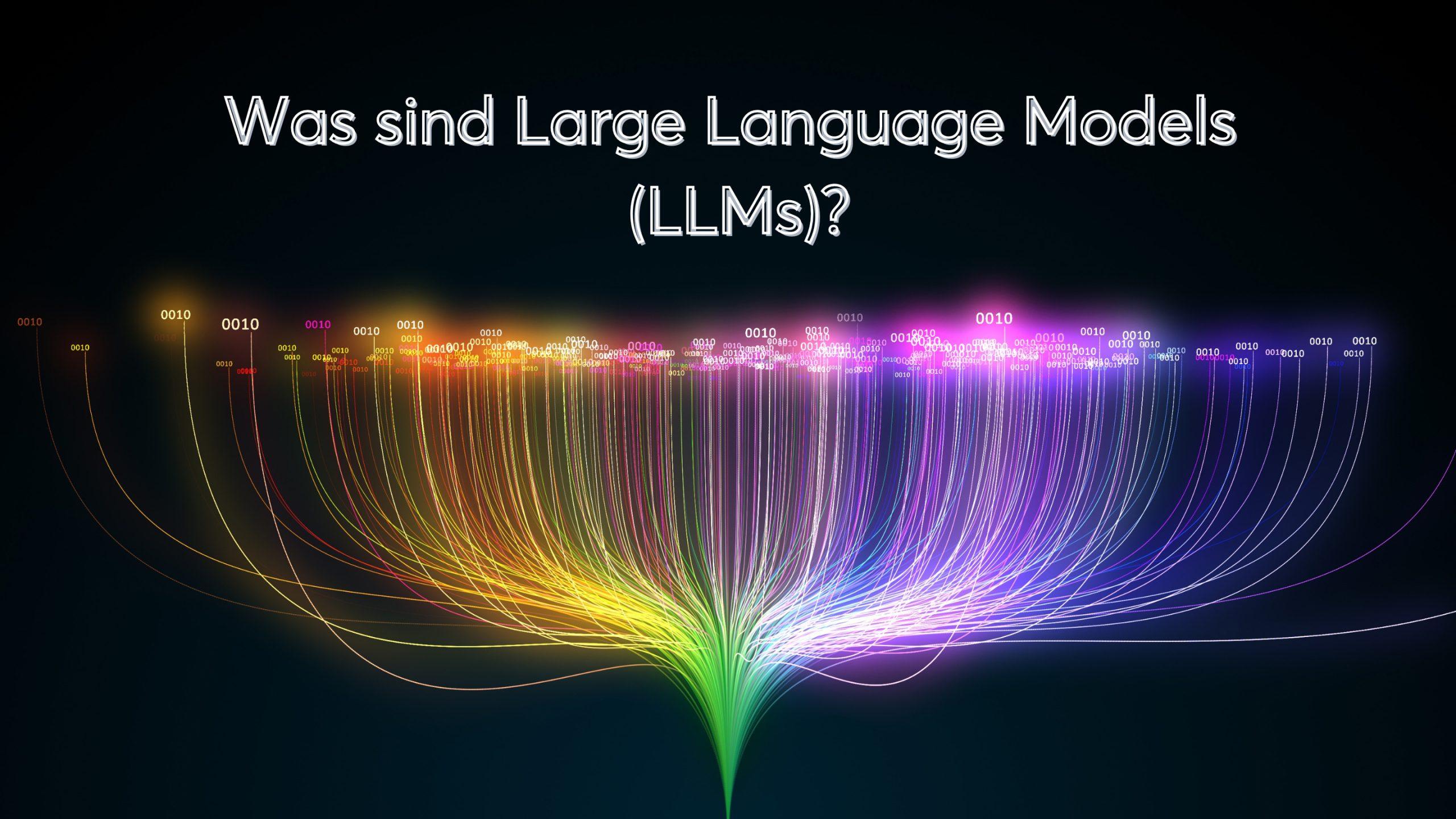
Real-World Applications of Large Language Models
Large language models (LLMs) have permeated various industries, revolutionizing how we interact with technology and information. Their versatility allows for an array of real-world applications, enhancing both personal and professional experiences. Let’s explore some fascinating ways LLMs are making an impact.
Customer Support Automation
Many companies are leveraging LLMs to streamline customer service processes. By integrating chatbots powered by these models, businesses can:
- Provide 24/7 support, reducing wait times.
- Handle multiple inquiries together, improving efficiency.
- Personalize responses based on user data, enhancing customer satisfaction.
For instance, companies like Zendesk and Drift utilize chatbots that can understand and generate natural language, allowing for more human-like interactions.
Content Creation
LLMs are transforming content generation across various platforms. Writers and marketers utilize these models to:
- Generate blog posts, articles, and social media updates quickly.
- Brainstorm ideas or outlines for new content.
- Improve SEO by crafting keyword-rich text that resonates with audiences.
Tools like jasper and Copy.ai have become invaluable resources in this space, enabling users to produce high-quality content with less effort.
Language Translation
The globalization of business has increased the demand for effective communication across languages.LLMs excel in this area by offering:
- Contextual translations that maintain nuance and tone.
- Real-time translation services for seamless communication.
- Support for numerous languages, bridging gaps in diverse markets.
Platforms such as Google Translate and DeepL harness the power of LLMs to provide users with reliable translations, making international interactions smoother than ever.
Personalized Learning Experiences
In education, LLMs facilitate tailored learning experiences. By analyzing student performance and preferences, these models can:
- Provide personalized study materials and resources.
- Assist in answering questions and clarifying concepts.
- Adapt learning paths based on individual progress.
Applications like Khan Academy and Duolingo incorporate LLM-driven features that foster more engaging and effective educational environments.
Data Analysis and Insights
LLMs also play a crucial role in analyzing vast datasets, helping businesses make informed decisions. They can:
- Extract key insights from unstructured data.
- Summarize reports and documents, saving time.
- Identify trends and patterns that inform strategies.
With tools like Tableau and Power BI, organizations integrate LLMs to enhance their data visualization capabilities, leading to smarter decision-making.
As these applications demonstrate, large language models are not merely a technological novelty; they are reshaping industries and improving everyday tasks. The potential of LLMs continues to expand, paving the way for even more innovative solutions in the future.
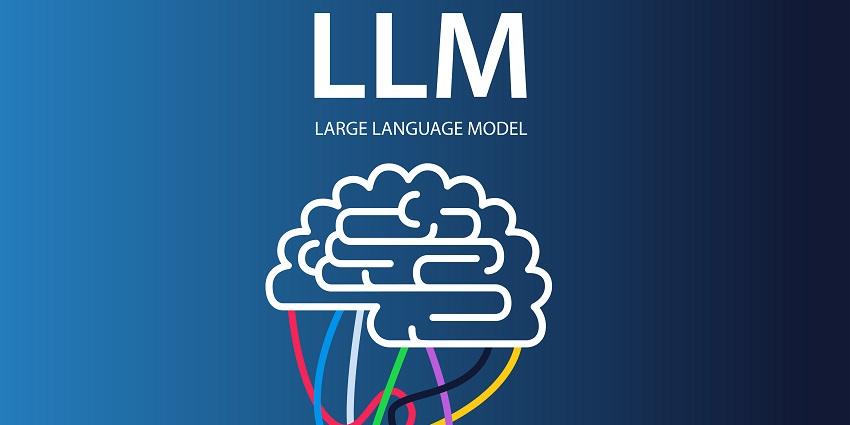
how to Choose the Right LLM for Your Needs
Choosing the right Large Language Model (LLM) for your specific needs can feel like navigating a vast ocean of options. With advancements in AI, each model comes packed with unique features and capabilities that cater to different applications.To make the best decision, consider several key factors that will align with your requirements.
First and foremost, define your use case. Are you looking for a model to generate creative content, perform data analysis, or assist in customer service? Identifying your primary goal will help narrow down your options significantly. Such as:
- Content Creation: Models optimized for storytelling or brainstorming.
- data processing: LLMs designed for summarization or structured data interpretation.
- conversational Agents: AI tailored for real-time interaction, like chatbots.
Next, consider the model size and performance. While larger models frequently enough have better performance due to their extensive training datasets, they also require more computational resources. Ask yourself:
- Do you have the infrastructure to support a large model?
- What is your budget for cloud computing costs?
- Is latency a critical factor for your application?
Another critical aspect to evaluate is the ease of integration. Some LLMs offer robust APIs that make it simple to integrate into existing systems,while others may require extensive customization. Look for options that provide:
- Comprehensive Documentation: Guides that help you understand how to implement the model.
- Community support: Active forums or user groups where you can seek advice.
- Pre-trained Models: Available configurations that can be quickly adapted for your needs.
don’t overlook the ethical considerations surrounding AI usage. Ensure the model you choose adheres to best practices in terms of data privacy, bias mitigation, and responsible AI deployment. Ask the following questions:
- What kind of training data was used?
- Are there mechanisms in place to address potential biases?
- How is user data handled and protected?
By carefully weighing these factors, you can confidently select an LLM that not only meets your current needs but also scales with your future ambitions. Remember, the right model can be a game-changer, unlocking new levels of efficiency and innovation for your projects.
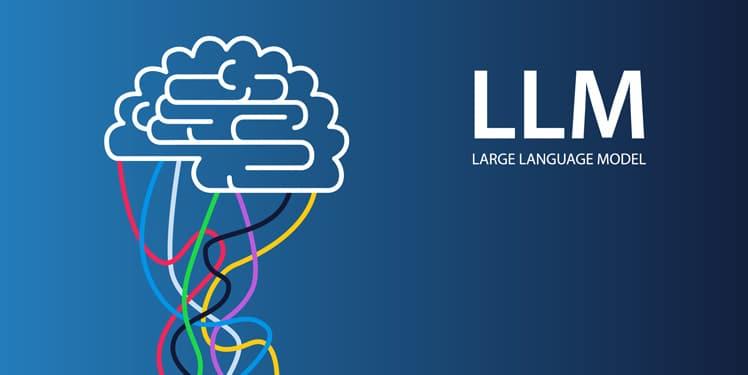
Tips for Getting Started with Large Language Models
Getting Started with Large Language Models
diving into the world of Large Language Models (LLMs) can be both exciting and overwhelming. Whether you’re a developer, researcher, or simply an enthusiast, understanding how to effectively harness the power of LLMs is crucial. Here are some tips to help you get started:
Understand the Basics
Before jumping into using an LLM, it’s essential to grasp the fundamental concepts. Familiarize yourself with:
- Natural Language Processing (NLP): Learn how LLMs fit into the broader field of NLP.
- Model Architecture: Get a grasp on how different architectures (like transformers) work.
- Training Data: Recognize the importance of the data used to train these models and how it affects performance.
Choose the Right Model
With countless LLMs available, selecting the right one for your project is critical. Consider the following:
- Task Requirements: does your task require generating text, summarizing information, or answering questions?
- Model Size: Larger models can perform better but require more resources. Assess your computational capabilities.
- Community and Support: Popular models often have a robust community and extensive documentation, which can be invaluable for beginners.
Experiment and Iterate
Getting hands-on experience is one of the best ways to learn. Start small with:
- Sample Projects: Use available tutorials and datasets to create simple applications.
- Fine-Tuning: experiment with fine-tuning models on specific tasks to see how performance improves.
- Join Communities: Engaging with forums, blogs, or social media groups can provide insights and inspiration.
Keep an Eye on Ethics and Bias
As LLMs can inadvertently reflect societal biases present in their training data, it’s vital to approach their usage with caution:
- Understand Bias: Educate yourself about the types of biases that can manifest in LLM outputs.
- Implement Safeguards: design your applications to mitigate potential harm,especially in sensitive contexts.
- Stay Informed: Follow ongoing discussions about ethics in AI and adapt your practices accordingly.
Monitor Performance and Feedback
continuously assess how your LLM performs on real-world tasks:
- Metrics: Define clear performance metrics to evaluate your model’s effectiveness.
- User Feedback: Gather and analyze feedback from end-users to make improvements.
- Iterate: Use insights gained from monitoring to refine and enhance your application over time.
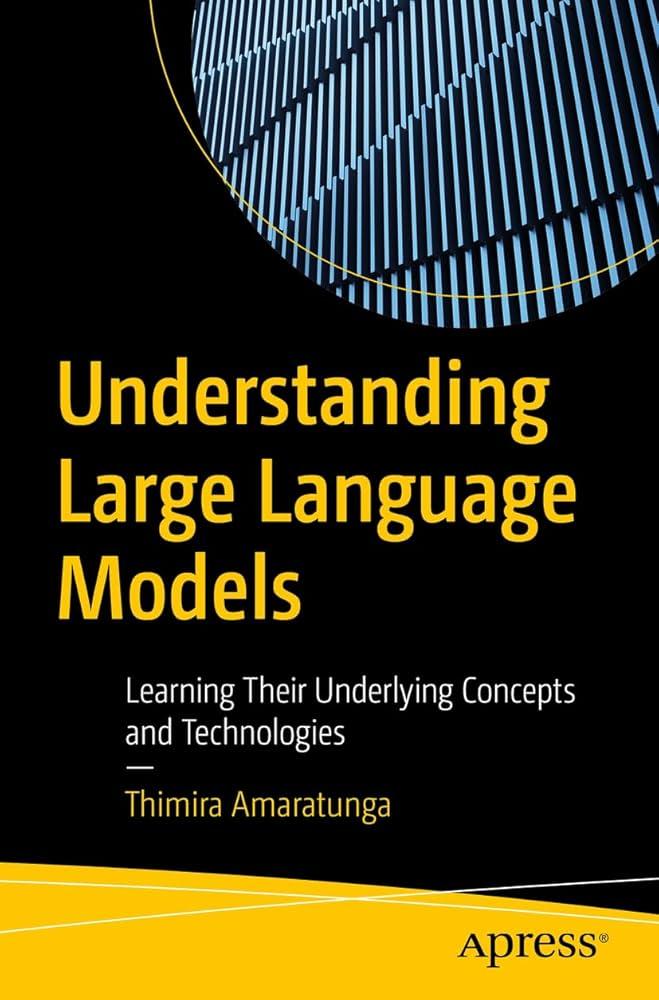
The Future of llms: Trends to Watch
The landscape of large language models (LLMs) is evolving at an astonishing pace, and several trends are emerging that promise to shape their development and application in the coming years. Here are the most critically important trends to keep an eye on:
- Increased Accessibility: With the rise of cloud computing, more businesses and individuals will have access to LLMs. This democratization allows small companies to harness the power of AI without the need for extensive resources.
- Multimodal Capabilities: Future LLMs are likely to integrate different types of data, such as text, images, and audio. this means they could understand and generate more complex responses, engaging users in richer and more meaningful ways.
- Personalization: As LLMs gather more user data, they will become increasingly personalized. Expect models to adapt their responses based on user preferences, previous interactions, and specific contexts.
- Ethics and Responsible AI: As powerful as LLMs are, concerns about ethics and bias remain. The future will see a stronger emphasis on developing responsible AI practices to mitigate risks and ensure fairness.
- Integration with Other Technologies: LLMs will become more intertwined with other technologies like IoT and augmented reality. This synergy could lead to innovative applications across various industries, from healthcare to entertainment.
Another trend to watch is the advancement in fine-tuning techniques. Researchers are continually discovering new methods to enhance the training of LLMs. As fine-tuning becomes more efficient, businesses will be able to create customized models that meet specific needs without starting from scratch.
Moreover, the shift towards smaller, more efficient models will be significant.While large models have dominated the landscape, the future may favor smaller models that can deliver impressive results with less computational power.This trend can greatly benefit mobile applications and environments where resources are limited, enabling AI solutions on everyday devices.
| Trend | Description |
|---|---|
| Increased Accessibility | More businesses can access powerful AI tools through cloud platforms. |
| Multimodal Capabilities | Integration of text, images, and audio for richer user experiences. |
| Personalization | Models adapting to user preferences and contexts. |
| ethics and Responsible AI | Focus on mitigating bias and ensuring fairness in AI applications. |
| Integration with Other Technologies | Collaboration with IoT and AR for innovative applications. |
As these trends unfold, LLMs will not only become more powerful but also more integral to our daily lives. Businesses and individuals who keep an eye on these developments will be well-prepared to leverage the transformative potential of large language models.

Ethical Considerations When Using LLMs
As we embrace the capabilities of large language models (LLMs), it’s crucial to navigate the ethical landscape they inhabit. These advanced technologies are transforming industries and influencing human behavior, but they also raise significant ethical concerns that we must address to ensure responsible use.
One of the primary ethical considerations is bias and fairness. LLMs are trained on vast datasets that may reflect societal biases, leading to outputs that can perpetuate stereotypes or discriminate against certain groups. It’s essential for developers and users to actively work towards minimizing bias by:
- Conducting regular audits of training data.
- Implementing fairness algorithms.
- Involving diverse teams in the development process.
Another pressing issue is openness.Users should understand how LLMs generate responses and the limitations of their outputs. Organizations should be clear about the data sources and methodologies used to build these models. This fosters trust and enables users to critically assess the information provided by these systems.
Moreover, there’s a growing concern about privacy. LLMs process large amounts of data, which might include sensitive personal information.To address privacy concerns, it’s vital to:
- Implement data anonymization techniques.
- Comply with data protection regulations, like GDPR.
- Educate users on data usage policies.
Additionally, the potential for misuse of LLMs cannot be ignored. these models could be exploited to generate misleading information, such as fake news or harmful content. To combat this, stakeholders must create guidelines and frameworks that discourage malicious use and promote ethical applications.
fostering a dialogue around the impact on employment is essential.As LLMs automate certain tasks, there can be apprehension regarding job displacement. It’s important to advocate for reskilling and upskilling programs that prepare the workforce for new opportunities created by LLM technology.
Addressing these ethical considerations is not just the obligation of developers but also of policymakers, businesses, and users. By collaboratively prioritizing ethics in the deployment of LLMs, we can harness their power while safeguarding our values and societal structures.
Maximizing the potential of Large language Models in your Projects
Large Language Models (LLMs) have become indispensable tools for developers, marketers, and businesses seeking to enhance their projects. By harnessing the advanced capabilities of these models, you can transform how you interact with data, automate processes, and create engaging user experiences. Here are some compelling techniques to maximize the potential of LLMs in your endeavors:
- Content Generation: Leverage LLMs to create high-quality written content, from blog posts to social media updates, ensuring you maintain consistency and engagement across platforms.
- Customer Support: Implement chatbots powered by LLMs to provide instant responses to customer inquiries, improving satisfaction while reducing response times.
- Data analysis: Utilize LLMs for extracting insights from large datasets, enabling you to make informed decisions based on trends and patterns identified in the data.
When integrating LLMs into your projects, consider the following best practices:
- Fine-tuning Models: Customize pre-trained models on your specific dataset to achieve better performance tailored to your business needs.
- Human Oversight: Always include a layer of human review, particularly for critical content, to ensure accuracy and appropriateness.
- Feedback Mechanisms: Establish feedback loops that allow users to report inaccuracies or issues, which can help in iterating and improving the model’s responses.
Comparison of Popular LLMs
| Model | Key Features | Best Use Cases |
|---|---|---|
| GPT-3 | Versatile, human-like text generation | Creative writing, coding assistance |
| BERT | Contextual understanding, bidirectional training | Search engine optimization, sentiment analysis |
| T5 | Text-to-text framework, multi-tasking | Translation, summarization |
By thoughtfully implementing these strategies and leveraging the capabilities of various LLMs, you can dramatically increase the efficacy and impact of your projects. Remember, the goal is not just about technology adoption but about enhancing user experience and driving value through innovative applications of these powerful models.
Frequently asked Questions (FAQ)
What is a Large Language Model (LLM)? 14+ best LLMs: Q&A
Q: What exactly is a Large Language Model (LLM)?
A: Great question! At its core,a Large Language Model is a type of artificial intelligence designed to understand and generate human-like text. These models are trained on vast amounts of text data, which allows them to learn patterns, context, and language structures. Think of them as incredibly advanced text prediction tools that can write essays, answer questions, and even engage in conversations!
Q: How do LLMs work?
A: LLMs use deep learning techniques, particularly a framework called transformers, to process and generate text.They analyze input text,predict the next word based on context,and create coherent responses. This training involves feeding them massive datasets—like books, articles, and internet pages—so they can learn the nuances of language and context.
Q: Why should I care about LLMs?
A: If you’re involved in writing, marketing, coding, or even education, LLMs can be game-changers! They can help you generate content quickly, brainstorm ideas, automate customer service replies, and even assist with coding tasks.The efficiency and creativity they offer can save you hours of work and help you stay ahead in your field.
Q: What are some of the best LLMs available today?
A: there are quite a few impressive LLMs out there! Here are 14+ that have garnered attention for their capabilities:
- OpenAI’s GPT-3
- Google’s BERT
- Microsoft’s Turing-NLG
- Facebook’s BlenderBot
- EleutherAI’s GPT-Neo
- Cohere
- AI21 Labs’ Jurassic-1
- Anthropic’s Claude
- Mistral
- Hugging Face’s Transformers
- IBM Watson
- DeepMind’s Gopher
- Alibaba’s M6
- Baidu’s ERNIE 4.0
Each of these models has unique strengths and applications, so choosing the right one depends on your specific needs.
Q: Are there any downsides or limitations to LLMs?
A: Absolutely, and it’s important to acknowledge them. LLMs can sometimes produce incorrect or nonsensical information and are sensitive to the input they receive. They also lack true understanding or consciousness; they generate responses based on patterns rather than genuine comprehension. Additionally, ethical concerns around biases in the training data can lead to biased outputs. so, while they’re powerful tools, it’s crucial to use them thoughtfully!
Q: How can I start using an LLM?
A: Getting started with LLMs is easier than ever! Many platforms offer user-friendly APIs that you can integrate into your applications, like OpenAI’s GPT-3 or Hugging Face’s models. There are also various online applications and chatbots powered by these models that you can experiment with.Just dive in, and you’ll discover a world of possibilities!
Q: What’s the future of LLMs?
A: The future of LLMs is incredibly promising! As technology advances, we can expect even more sophisticated models that understand context better, generate more accurate responses, and even exhibit greater creativity. The integration of LLMs into various industries will likely reshape how we work, communicate, and even learn. So, keeping an eye on these advancements could be beneficial!
Q: Are LLMs worth the investment?
A: Definitely! The potential return on investment from utilizing LLMs can be ample, especially for businesses and individuals looking to enhance productivity, creativity, and customer engagement. The time saved and the quality of output can significantly outweigh the costs involved. It’s a smart move for anyone looking to leverage the power of AI!
Large Language Models are not just a trend; they’re a transformative technology reshaping how we interact with information and each other. Exploring the best LLMs available today can unlock new opportunities and elevate your projects to the next level!
The Conclusion
As we wrap up our exploration of Large Language Models (LLMs), it’s clear that these incredible technologies are reshaping the way we interact with information and each other.From powering chatbots to assisting in creative writing, llms are not just a trend—they’re here to stay and transform various industries.
With over 14 LLMs at your fingertips, there’s a wealth of options to suit your specific needs, whether you’re a developer, a business owner, or simply a curious learner. The right model can enhance productivity, spark creativity, and bring innovative solutions to the table.
So, why not dive in? Experiment with these tools and see how they can elevate your projects or streamline your work. The future is bright, and the possibilities are endless. Embrace the power of language models, and who knows? You might just unlock the next big idea or breakthrough. Happy exploring!

